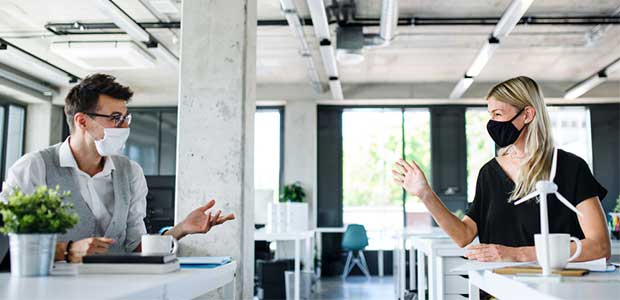
What Constitutes a Safe Workplace?
A recent article from the Los Angeles Times uses California workplaces and regulations to answer the question of ‘what makes a workplace safe?’ The answer involves a comprehensive, holistic approach to a healthy, safe workforce.
While each state has a different situation with the coronavirus, there are national trends among workplaces, employees and safety managers and their fight to keep their jobs and stay healthy. A recent article from the Los Angeles Times explores the question ‘what makes a workplace safe?’, and the points could help workplaces around the country.
California is suffering from very high cases of coronavirus, and experts say the state now resembles New York, the epicenter of the COVID-10 crisis earlier this spring. The state is seeing “too much community spread,” said L.A. County officials.
However, even while cases are spreading through communities, officials are struggling to determine where people are being infected.
California’s situation can be a model and tool to help other states and workplaces, especially since there are little to no federal guidelines on how to operate workplaces. Here are a few factors every workplace can keep in mind to understand what makes a workplace safe and healthy:
COVID-19 Affects Certain Groups
California is not the only state that proves that coronavirus is affecting certain groups more than others. For example, essential workers and those in institutions like nursing homes and prisons are much more likely to contract the virus. Those who can work from home are much less likely to become sick.
If you oversee organizations, groups or workplaces with essential workers or caretaking personnel, you must be aware of the heightened risk of infection they face. For example, in California, an investigation found that the state has not been testing the inspectors it sends into nursing homes to ensure they comply with infection controls. In response, Governor Gavin Newsom recently said that officials would implement an aggressive testing regime.
People of color are much more likely to become infected or die from coronavirus as well, for similar reasons. Members of Latinx and Black communities are much more likely to work in essential and caretaking jobs, which puts them at heightened risk.
Workplace Safety Rules Must be in Place
Part of protecting your workers involves giving them legal rights to a safe and healthy workplace. While each state and county has differing laws, you (as an employer or employee) should be aware of the laws that allow employees to cite and fine businesses that violate health orders.
If you are worried about contracting the virus at work, here are some steps to take for talking to your employer.
Be Aware of Labor Laws, and Fight for Better Ones
The coronavirus has highlighted a number of faults in labor and employment laws including worker rights, employer rights/responsibilities and the role of different governing bodies. In California in particular, state lawmakers are mulling whether labor laws need to evolve. They have proposed expanding workers’ compensation eligibility so that more workers will be covered if they get COVID-19, increasing the number of sick days for food service workers and requiring employers to chip in for utility and internet bills for people working from home.
Colorado just passed a progressive bill that gives Colorado workers more paid sick days and flexibility for childcare, especially if schools close because of the pandemic or another health crisis.
Speaking of childcare, good employers understand many of their workers have families and kids in school. With changing school systems and the possibility that many kids will not attend in-person childcare or school, employers should consider expanding benefits, paid days off and other options for parents of children.
At the end of the day, a safe and healthy workplace can only be achieved with two-way communication between employers and workers. Employers should communicate their goals and efforts to workers, but they should also ask for feedback from employees, and listen. The world is ever-changing, and the pandemic has helped identify weak areas of the workplace system so we can address them.